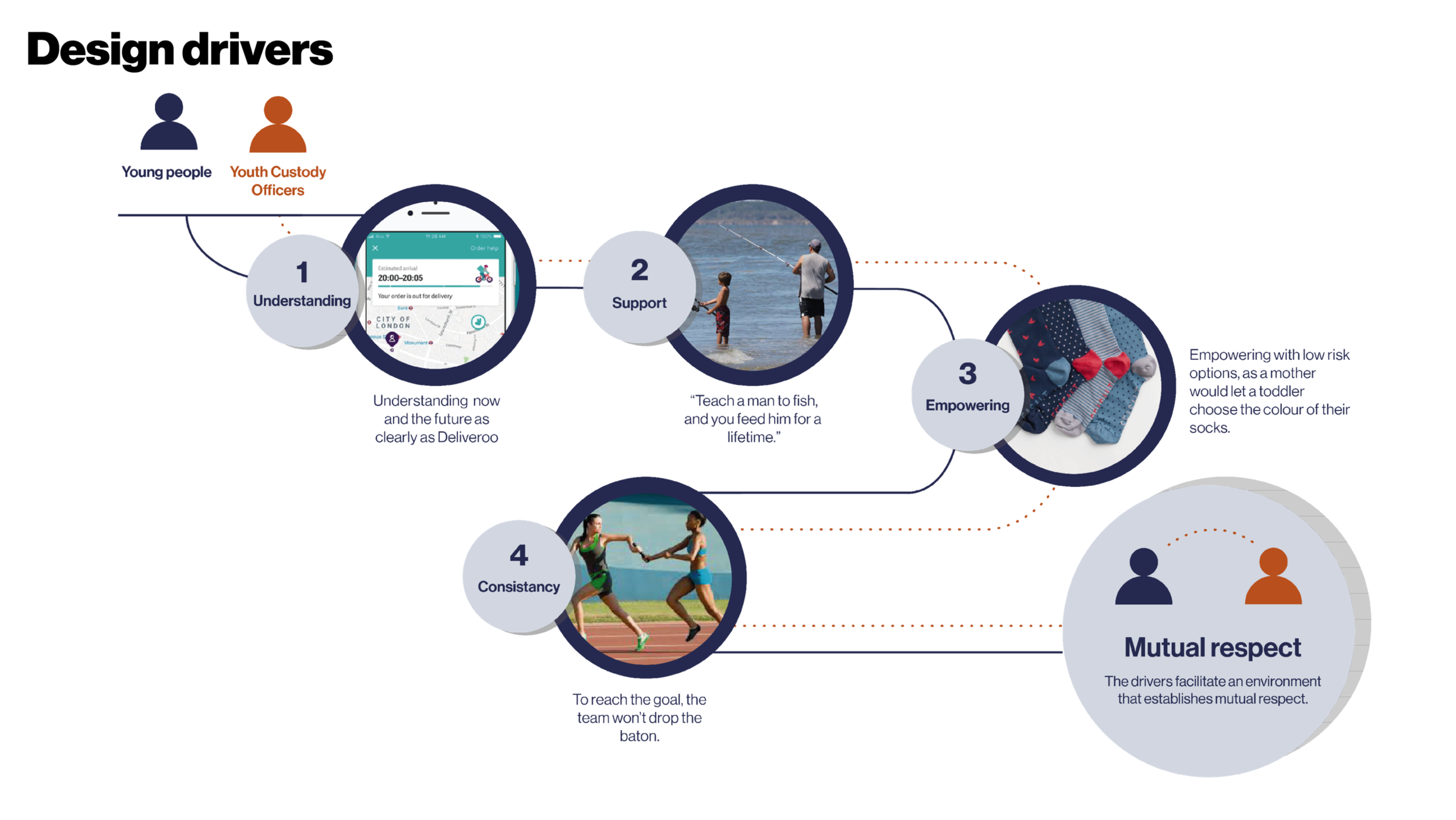TRU is a digital platform that sits within youth custody institutions and is accessible at the key moments in a young person’s journey through the system.
This project was undertaken in collaboration with the Ministry of Justice User Centred Policy Design team. I worked with fellow designers Alessandro Paone, Pinja Piipponen and Cristina Mogollon.
A mutual distrust between young people and the system
As the youth custody population decreases, so does the number of vulnerable and at risk individuals. A new policy, the Secure School, aiming to bring education to the heart of the youth justice system, represented an opportunity to reimagine a young person's rehabilitation journey.
Analysis of the current system identified an overarching theme of mutual distrust between young people and the system. Young people enter custody with entrenched, negative opinions of the government system. This is reinforced when they are punished rather than rehabilitated by frontline staff, particularly prison officers who are working within a framework that doesn’t allow for the humanisation the people in their care.
Illustration of the distance between those that create the frameworks that dictate the way the system is run and those whose jobs are governed it but have the most contact with the young people in the system.
Co-created design drivers with a focus on rehabilitation rather than punishment
Our aim was to design a holistic, end-to-end service that considered the entire scope of needs of young people whilst in custody, ensuring that relevant government departments were able to work together to deliver a robust, holistic set of services. In order to achieve this, we used a strong participatory design approach. We worked closely with the UCPD team, youth custody frontline workers and experts such as family counsellors and policymakers. Due to the nature of the project, we weren’t able to speak directly to young people so we spent a lot of time interviewing and developing our work with proxies who had lived experience of the system.
We ran various workshops and prototyping sessions throughout the design process. An example of this was an ideation session we ran for people from the Ministry of Justice, the Youth Justice Board and the Department for Education. Their input helped us to define five important design drivers that our solution had to reflect.
Ideation Workshop with the Ministry of Justice
Design Drivers co-created as a result of workshop
TRU will bridge the gap between the key people of the journey while giving a young person in the system the awareness of choice and provide them with constant support. The mutual respect allows Jamie to trust the system which will result in him starting to accept help. The time officers spend with young people is now acknowledged and valued. Devota will spend less time on mundane tasks and more constructive and bonding time with Jamie. The digital system and Devota keep Jamie feeling supported, meaning he is safe and empowered to succeed and all staff feel they can have an impact on his journey.
Evolution of the system
TRU’s digital platform will enable the development of positive relationships between staff and young people within the system, however, a new framework and recruitment policy would be needed to support its success. Our long term vision is the redefinition of a new permanent role that will replace the existing prison officers with Youth Support Workers - highly skilled, better paid and committed to the job and ultimately working towards positive measures of success.
As TRU evolves, the TRUview can grow with other content all tailored and curated based on the seeds of the young people.
Evolution of TRU as it incorporates more digital services
Project team: Bea Mandelstam, Alessandro Paone, Pinja Piipponen and Cristina Mogollon





